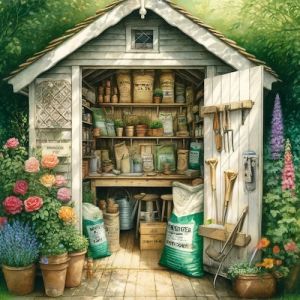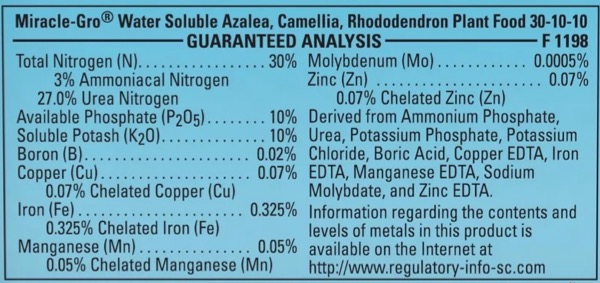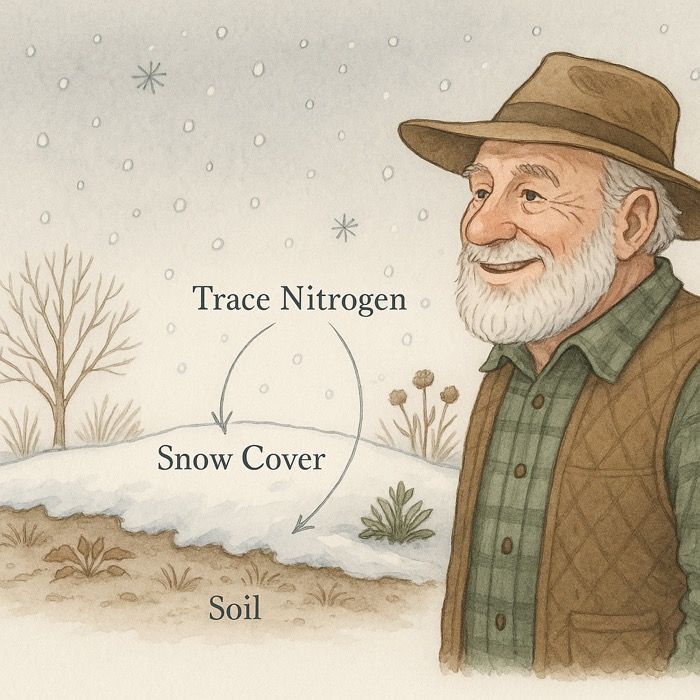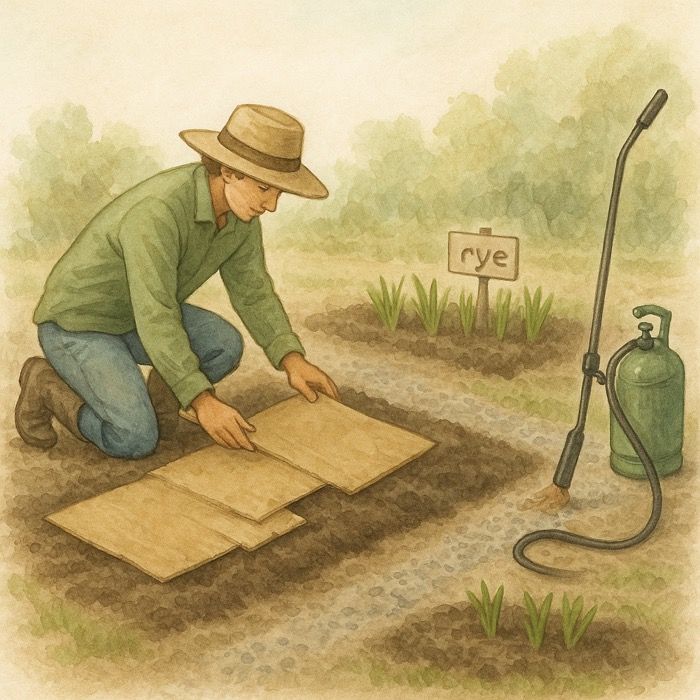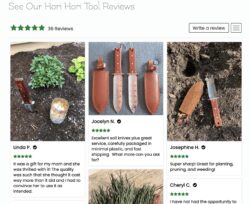The Complete Guide to Garden Fertilizer: Boost Your Garden’s Growth
Giving the right nutrients to your plants
Fertilizing your garden is essential for achieving lush, vibrant, and healthy plants. Whether you’re a novice gardener or an experienced green thumb, understanding the types of garden fertilizers and how to use them effectively can make a significant difference in your garden’s success. In this comprehensive guide, we’ll explore everything you need to know about garden fertilizers, from the basics to advanced tips.
Table of Contents
- Why Garden Fertilizer is Important
- Types of Garden Fertilizers
- Organic Fertilizers
- Inorganic Fertilizers
- How to Choose the Right Fertilizer for Your Garden
- Application Techniques for Maximum Effectiveness
- Common Fertilizer Mistakes to Avoid
- Best Practices for Sustainable Fertilizing
1. Why Garden Fertilizer is Important
Garden fertilizers are crucial because they provide essential nutrients that plants need to grow. These nutrients include nitrogen (N), phosphorus (P), and potassium (K), often referred to as NPK. Without adequate nutrition, plants can suffer from stunted growth, poor yield, and susceptibility to diseases.
Soil Nutrient Depletion
Over time, soil can become bare of nutrients due to several factors. Continuous planting and harvesting can deplete soil nutrients as plants absorb them for growth. Rainwater and irrigation can also wash away essential minerals, a process known as leaching. Additionally, soil erosion can strip away the topsoil, which is typically the most nutrient-rich layer. Without replenishing these nutrients through fertilization, soil fertility diminishes, leading to weaker plants and reduced crop yields.
2. Types of Garden Fertilizers
Organic Fertilizers
Organic fertilizers are derived from natural sources and include compost, manure, bone meal, and fish emulsion. They improve soil structure, enhance microbial activity, and provide a slow release of nutrients, making them ideal for long-term soil health.
- Compost – Rich in nutrients and beneficial microorganisms, compost is a great all-purpose fertilizer. It can be made from kitchen scraps, yard waste, and other organic materials. Use compost to improve soil texture, moisture retention, and nutrient content.
- Manure – Provides a good balance of nutrients but should be well-aged to avoid burning plants. Manure from cows, horses, chickens, and rabbits is commonly used. It is excellent for improving soil fertility and structure.
- Bone Meal – High in phosphorus, it’s excellent for root development and flowering. Use bone meal when planting bulbs, perennials, and vegetables to promote strong root systems and vibrant blooms.
- Fish Emulsion – A fast-acting liquid fertilizer high in nitrogen, promoting leafy growth. Fish emulsion is ideal for leafy greens and other vegetables that benefit from quick nutrient uptake.
Use Cases for Organic Fertilizers
- Compost – Ideal for enriching vegetable gardens, flower beds, and lawns.
- Manure – Best for large garden areas and improving overall soil health.
- Bone Meal – Perfect for planting bulbs, flowers, and root vegetables.
- Fish Emulsion – Great for container plants and leafy vegetables.
Inorganic Fertilizers
Inorganic fertilizers are synthetically manufactured and provide immediate nutrient availability. They are often formulated with precise nutrient ratios to address specific plant needs.
- Granular Fertilizers – Easy to apply and offer controlled-release options. Products like Osmocote and Miracle-Gro Shake ‘n Feed are popular choices. Use granular fertilizers for general garden maintenance and nutrient supplementation.
- Liquid Fertilizers – Provide quick nutrient uptake and are ideal for foliar feeding. Brands like Miracle-Gro Liquid All Purpose and Dyna-Gro are widely used. Liquid fertilizers are perfect for quick nutrient boosts and addressing specific deficiencies.
- Slow-Release Fertilizers – Release nutrients gradually over time, reducing the need for frequent applications. Examples include Scotts Turf Builder and Jobe’s Fertilizer Spikes. Slow-release fertilizers are excellent for busy gardeners who want to minimize maintenance.
Use Cases for Inorganic Fertilizers
- Granular Fertilizers – Suitable for garden beds, lawns, and larger planting areas.
- Liquid Fertilizers – Ideal for container plants, hydroponics, and addressing nutrient deficiencies.
- Slow-Release Fertilizers – Great for low-maintenance gardening and ensuring consistent nutrient supply.
Master Gardener Tip – Water your garden thoroughly a day or two before applying fertilizer, and i nsure the soil is well drenched. This ensures that the soil is moist during garden fertilizer application, which helps the fertilizer dissolve and be absorbed more efficiently by the plant roots.
3. How to Choose the Right Fertilizer for Your Garden
Selecting the right fertilizer depends on several factors, including your soil type, plant species, and specific nutrient needs. Conducting a soil test is the best way to determine the nutrient levels in your garden and identify any deficiencies.
Deciphering Fertilizer Labels
Fertilizer labels typically display three numbers, known as the NPK ratio. These numbers represent the percentage of nitrogen (N), phosphorus (P), and potassium (K) in the fertilizer. For example, a 10-10-10 fertilizer contains 10% nitrogen, 10% phosphorus, and 10% potassium. Understanding these ratios helps you choose the right fertilizer for your plants’ needs.
- Nitrogen (N) – Promotes leafy growth and is essential for photosynthesis.
- Phosphorus (P) – Supports root development and flowering.
- Potassium (K) – Enhances overall plant health, disease resistance, and drought tolerance.
A Good General Fertilizer’s NPK Ratio A balanced fertilizer with an NPK ratio of 10-10-10 or 20-20-20 is suitable for most garden plants, providing a well-rounded nutrient supply. To know exactly what you need, this will help:
- Soil Test – Reveals pH levels and nutrient deficiencies, guiding your fertilizer choice.
- Plant Type – Different plants have varying nutrient requirements. For example, leafy vegetables require more nitrogen, while flowering plants need more phosphorus.
- Growth Stage – Young plants and seedlings often need a different nutrient balance than mature plants.
4. Application Techniques for Maximum Effectiveness
Proper application techniques ensure that your plants receive the nutrients they need without wasting fertilizer or harming the environment.
- Broadcasting – Evenly spreading granular fertilizer over the soil surface.
- Side-Dressing – Applying fertilizer alongside growing plants.
- Foliar Feeding – Spraying liquid fertilizer directly onto plant leaves for quick nutrient absorption.
- Incorporating – Mixing fertilizer into the soil before planting.
Maximizing Absorption in the Root Ring
For maximum absorption, apply fertilizers within the root ring, which is the area from the plant’s base to the outer edge of its canopy. This is where the majority of the plant’s feeder roots are located and where nutrient uptake is most efficient.
5. Common Fertilizer Mistakes to Avoid
Avoiding common mistakes can help you get the most out of your garden fertilizer and prevent damage to your plants.
- Over-Fertilizing – Can lead to nutrient burn, poor plant health, and environmental pollution.
- Under-Fertilizing – Results in nutrient deficiencies and weak plant growth.
- Incorrect Timing – Applying fertilizer at the wrong time can reduce its effectiveness. Follow the recommended timing for each type of fertilizer and plant.
6. Best Practices for Sustainable Fertilizing
Sustainable fertilizing practices ensure that your garden thrives while protecting the environment. By using fertilizers responsibly, you can enhance your garden’s health while minimizing negative impacts on the ecosystem.
- Use Organic Fertilizers – Whenever possible, choose organic options to improve soil health.
- Rotate Crops – Helps maintain soil fertility and reduce pest and disease buildup.
- Mulching – Retains soil moisture and adds organic matter as it decomposes.
- Cover Crops – Planting cover crops during the off-season improves soil structure and adds nutrients.
By adopting these sustainable practices, you can create a thriving garden that contributes to a healthier planet.
Conclusion
Understanding and applying the right garden fertilizers can transform your garden into a thriving, productive space. By choosing the appropriate fertilizers, using correct application techniques, and following sustainable practices, you can ensure your plants receive the nutrition they need to flourish. Happy gardening!
More From Our Master Gardener
Recent Posts

❄️ Snow as Fertilizer – The Truth About “Poor Man’s Nitrogen”

5 Unexpected Winter Weed Control Strategies (That Don’t Involve Mulch)

Harnessing Winter Sun – Passive Solar Tricks for Your Garden

How to Grow Spinach – The Ultimate Beginner’s Guide for Tender, Nutritious Leaves

How to Grow Peas: The Ultimate Beginner’s Guide for Sweet, Crisp Harvests
